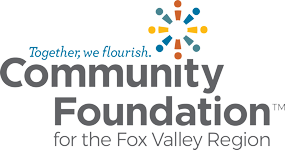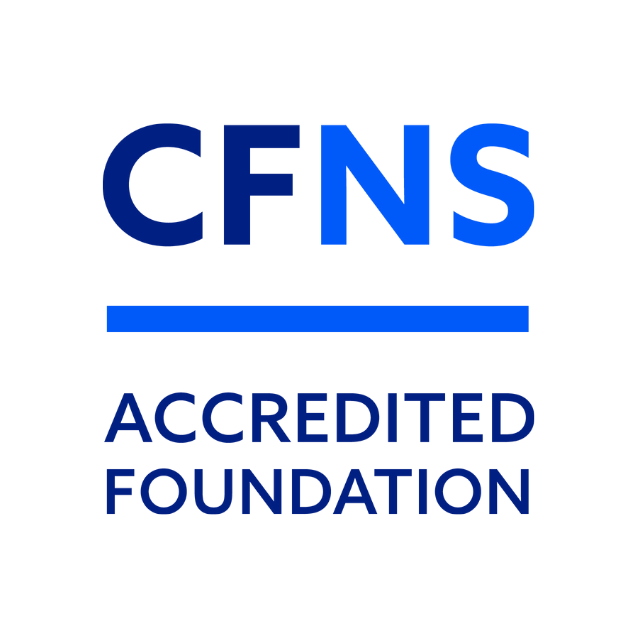Frequently Asked Questions
Answers for applicants and recipients
Here are the answers you’re looking for!
If you are applying for scholarships, click on the topics below to expand the answers.
If you are a scholarship recipient, scroll down or click here for answers to commonly asked questions.
February 16, 2024 Update:
As students are experiencing delays with receiving their FAFSA Submission Summaries, the Community Foundation has updated what information we collect in our financial need section of our Community Foundation Universal Scholarship Application. The application has been updated so that applicants are not required to submit their FAFSA Submission Summaries or to provide their SAI (Student Aid Index) number that the FAFSA Form produces for them.
In these cases, applicants will be asked to use the Federal Student Aid Estimator tool provided by the Department of Education to report their estimated SAI. Other FAFSA-related financial need questions will be self-reporting this year (Student Savings and Student Income). Because the Federal Student Aid Estimator tool asks for the same information as the FAFSA Form, it should be a straightforward process for our applicants. These changes have been made in the application already with added instructions, so applicants will be able to submit their applications successfully by the March 1 application deadline.
For scholarships that consider financial need, recipients will be required to submit their FAFSA Submission Summaries to the Community Foundation during the verification process in order to collect their awards, to verify the accuracy of responses in the application. If the recipient’s official FAFSA numbers differ significantly from the numbers they provided in the application, they will not be able to receive the award(s) for scholarships that consider financial need.
Answers for Applicants
$0 – Applying for scholarships through the Community Foundation is free. If a scholarship provider ever requires a credit card number to create an account or to submit an application, do some extra research to ensure it isn’t a scam.
Each scholarship offered by the Community Foundation has a Scholarship Profile. The profile is a document that contains details like the eligibility criteria, award amount, payment process, and loss of eligibility. It may also contain background information about the donors. The profile can be accessed through a link on the List of Scholarships for each scholarship. Applicants should review the Scholarship Profiles carefully when they begin looking for scholarship opportunities.
The Community Foundation offers four types of scholarships:
- Scholarships for High School seniors – select your high school on the List of Scholarships page and our UWO-Fox Cities Campus.
- Scholarships for current college students and non-traditional students – visit our College and Non-Traditional Student page and our UWO-Fox Cities Campus.
- Corporate scholarships for dependents of employees at different companies – visit our Corporate Scholarships.
- Scholarship aid to K-12 students for art/music lessons – visit our K-12 Art/Music Lessons.
The Community Foundation’s scholarship webpage indicates how to apply for specific scholarships. Each scholarship listed has a “How to Apply” section indicating where to find the application. Applications will usually be located on the Community Foundation’s Scholarship Portal, at a high school guidance office, or somewhere else.
Note: To register, use an email you can access long term. Applicants should NOT use a school assigned student emails to register, as we communicate with applicants and recipients via email throughout the process.
Reference this Applicant Tutorial resource. This resource contains instructions videos and written instructions to find your way through creating an account, to how to find applications, and how to submit applications.
To find scholarships that homeschooled students may qualify for, select “Homeschooled” from the High School drop-down menu at the top of the List of Scholarships.
There is no limit to how many scholarships someone may apply for, as long as the applicant matches the eligibility criteria. Eligibility criteria for each scholarship is displayed on the Community Foundation’s List of Scholarships.
Deadlines can be found in two places: on the Scholarships: Start Here-page under the section “Scholarship Deadlines for 2024” and on the Scholarship Portal on each application’s summary.
The Community Foundation does not have hard rules about what is considered “enough” financial need. It is true that scholarships that consider financial need will compare the applicants to each other to determine the highest financial need among multiple factors. That being said, those scholarships still consider all the other eligibility criteria. When a scholarship takes financial need into consideration, that does not mean that financial need will be the only determining factor in the selection process.
If an applicant meets the eligibility criteria for a specific scholarship, they should apply, regardless of their financial status.
Many scholarship opportunities offered by the Community Foundation take financial need into consideration. Without filling out FAFSA (Free Application for Federal Student Aid), you will not have access to your SAR (Student Aid Report). To be eligible for scholarships that consider financial need, you may need to upload the SAR as part of the application. We strongly encourage all applicants to fill out FAFSA form and have SAR available before filling out your application(s).
Typically, scholarships cover either tuition expenses or other charges related to the Cost of Attendance (COA). This information is included in the Scholarship Profile for each scholarship, in the List of Scholarships.
Universal applications are applications that include multiple scholarships opportunities within a single application. Students only need to complete a Universal application one time to apply for all opportunities listed within that Universe. By filling out and submitting a single Universal application, applicants have a chance to qualify for multiple scholarships – without having to fill out multiple applications. Check out the Applicant Tutorial resource specifically for universal applications.
This means the full scholarship award is paid one time, in one lump sum, typically for the fall semester of freshman year of college. Payment details can be found in the Scholarship Profile, under “Award Amount and Payment Procedure.”
This means the scholarship award is split between more than one semester or school year and is paid periodically. (For example: A $2,000 scholarship award may pay $1,000 during the fall of freshman year and $1,000 during the fall of sophomore year.) The recipient must verify their continued eligibility between each payment. Payment details can be found in the Scholarship Profile, under “Award Amount and Payment Procedure.”
For applications open in the spring, scholarship selection committees recommend recipients between March-May, depending on the scholarship’s application deadline.
- If the scholarship application is through a high school, students will find out in their high school’s award ceremony if they are recipients.
- If the scholarship application is through the Community Foundation’s online Scholarship Portal, the students are typically notified via mail during the spring. Applicants can also check their application’s status through the Applicant Dashboard on the Scholarship Portal, under Active Requests: Undecided, Denied, or Approved.
For scholarships through other entities, or for applications that have fall deadlines, selection committees typically make their decisions within a month of the application deadline.
Here are our most commonly used terms. If you do not find a term on the list below that you are unsure of, please reach out to [email protected] for further help.
- Graduating Seniors vs. Graduates
Graduating seniors are currently high school seniors, on track to graduate high school in the upcoming spring. Graduates include both current, graduating seniors and also students who have graduated from high school previously.
- Post-secondary education
This means education obtained from an institution of higher education that is attended after high school. High school is “secondary” education.
- Undergraduate
An undergraduate is a student pursuing a bachelor’s degree (typically a 4-year degree) at a college or university or a student pursuing a 2-year associate degree program at a college, community college, or vocational/technical school.
- Accredited college
Accreditation is a process of recognition that a school meets or exceeds certain academic standards. The Community Foundation only sends scholarships to schools that are accredited to ensure legitimacy of the receiving organizations. Students can obtain information about a school’s accreditation from the school.
- Field of Study vs. Degree vs. Major
The Community Foundation uses eligibility criteria surrounding these three terms. Let’s use Marketing as an example:
- Major: Only students who are specifically majoring in Marketing would be eligible.
- Degree: Students who are majoring or minoring in Marketing, or pursuing a business degree with a Marketing emphasis, would be eligible.
- Field of Study: Students pursuing degrees in various disciplines and majors could be eligible, such as business or graphic design. As long as the student can demonstrate that their studies relate to the field of Marketing, they could be eligible.
- Traditional students vs. Non-Traditional students
Traditional students are defined as students who have graduated high school and continue to pursue post-secondary education immediately following their high school graduation, not taking a gap year(s).
Non-traditional students are students who have either previously graduated college at least 1 year prior, or taken a gap year(s) before/during college, or are returning to pursue post-secondary education later in life.
- Full-time vs. Part-time student status
The Community Foundation generally considers a student taking 12 credits per semester as being a full-time student and 6-11 credits per semester as being a part-time student. This is how most post-secondary institutions define full-time and part-time. However, this can vary based on the school’s credit/point system. Students can review their intended college’s website to find out the credit point system the school uses. Most of the Community Foundation’s scholarships are for students who take 6 or more credits per semester.
If your college has a different credit/point system (for example, the school might be on a trimester schedule with 9 credits per trimester being full-time), please reach out to [email protected] to request that we update your application to reflect that you are still a full-time student, even if you are taking fewer than 12 credits. When you reach out, please provide proof of the school’s alternate credit/point system.
- Preference
When the scholarship criteria list includes a preference, it means that, while a certain factor is not required, it could increase an applicant’s likelihood of being chosen as a recipient.
Our website (as most websites do) offers a translator. At the bottom of any page on our website, you can find a Google symbol with a drop-down menu of languages. Select your preferred language from the available choices and our website is automatically translated by using Google translate. This functionality extends to all written text on our website, but does not apply to graphs or attached documents, such as PDFs. (Disclaimer: Google’s translator functionality is not perfect, so some of the information may read differently or incorrectly.)
The recipient’s congratulatory packet (mailed or emailed) will list instructions for their next steps and will include details on the award received. All recipients need to create accounts on the Community Foundation’s Scholarship Portal to accept their awards. This Applicant Tutorial resource is designed to help new users navigate the Portal to locate award information and any assigned follow-up forms.
Recipients can view the instructions document here.
If your phone number, mailing address, or email address has changed, log into the Community Foundation’s Scholarship Portal and update your profile information.
The Community Foundation staff will approve the Scholarship Acceptance Form submission in July. After that, the Scholarship Verification Form will become available for you to submit. if you have any questions or there is special urgency in your scholarship payment processing, please reach out to [email protected].
The Community Foundation sends the scholarship payments directly to the recipient’s school, designated to the recipient’s student account.
Renewable scholarship awards are split between semesters or academic years and are paid periodically. The recipient must verify their continued eligibility between each scholarship payment.
Examples:
- A $2,000 scholarship award for 2 years of college is paid $1,000 for the fall of freshman year, $1,000 for the fall of sophomore year.
- A $1,000 scholarship award for the first year of college is paid $500 for the fall semester and $500 for the spring semester.
The Community Foundation’s Scholarship Portal has two steps for applicants to begin claiming their award:
1. Scholarship Acceptance Form
- The recipient fills out this form to accept, decline, or defer their award. After accepting the scholarship, the recipient is assigned to the Scholarship Verification Form.
- This form should be filled out as soon as the recipient knows the school they will be attending and their student ID number.
2. Scholarship Verification Form(s)
- The recipient fills out this form and provides proof of continued eligibility to claim the award. The Scholarship Verification Form will tell the student what documents are needed. Documents needed may include, but are not limited to, the following:
- Class/Registration list with credits listed
- Proof of major
- Invoice
- Previous semester/year’s transcript
Typically, the Scholarship Acceptance Form on the Community Foundation’s Scholarship Portal gives recipients the opportunity to defer their scholarship(s) for up to one year. Most of Community Foundation’s scholarships are deferrable.
Office Phone
Address
4455 W. Lawrence St
Appleton, WI 54914
map it
Office Hours
8:00am - 11:30am
and noon - 4:00pm
Monday-Friday


